Gary Strombo of Everett, Washington, told his friend John Leyde that he wanted to build a boat. As often happens, the moment you speak of your wishes to someone else, the momentum to carry them out begins to build. Gary had had no experience building boats, but John got his start decades ago and had several boats to his credit, including two electric launches and a diesel launch that he later converted to steam power. Gary had taken an interest in Adirondack guideboats and found plans and instructions for a strip-built version in Building an Adirondack Guideboat by Michale Olivette and John Michne.
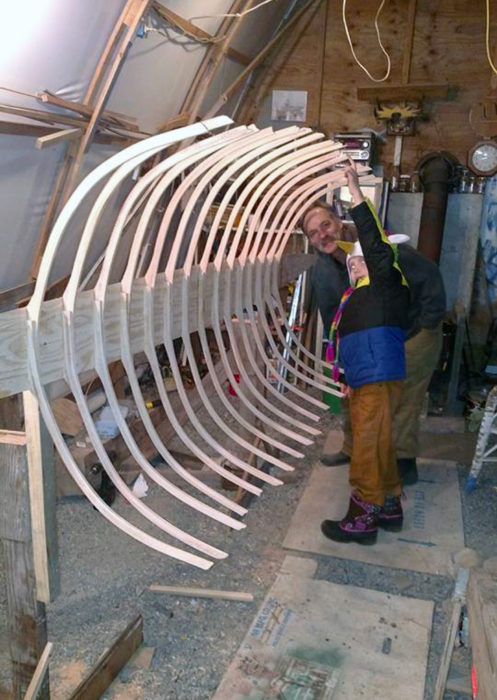 photographs courtesy of Gary Strombo
photographs courtesy of Gary StromboWith John looking on, Sigrid takes the measure of the first 15 of 29 frames.
John volunteered the use of his shop and tools for the project, and for about 16 months the two friends got together for a few hours every Tuesday to work on the boat. For jobs that were easier and faster with more than two pairs of hands, like milling the cedar strips, they had friends pitch in on occasional Saturdays.
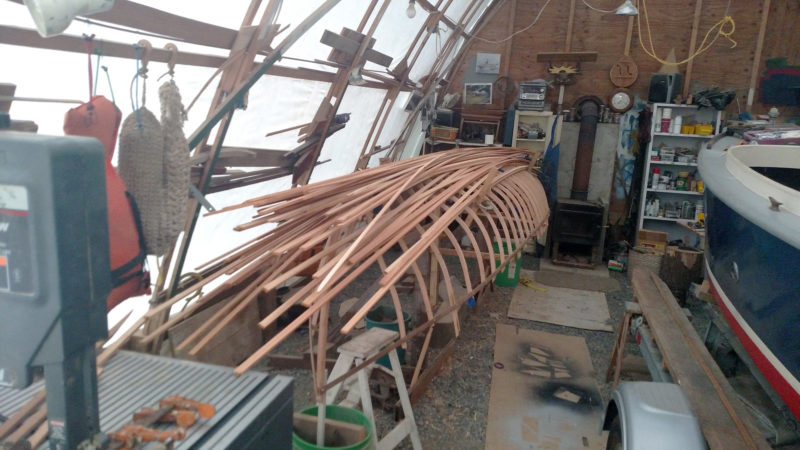
With all of the frames in place, planking with the red-cedar strips could begin.The guideboat project was squeezed in John’s boat shed alongside his steam launch, GALILEE.
The most frequent helper was Gary’s 10-year-old daughter Sigrid, who rarely missed a Tuesday or a Saturday session. Gary had grown up with a father who was a hardworking logger: “There were four of us kids, two boys and two girls, and I am not 100-percent sure Dad could tell us apart. He expected the same hard work, craftsmanship, and attention to detail from all of us.”
Gary has included Sigrid in all of his projects to give her the same kind of experience he had while growing up with the hope that she will become a competent, confident, and capable adult.
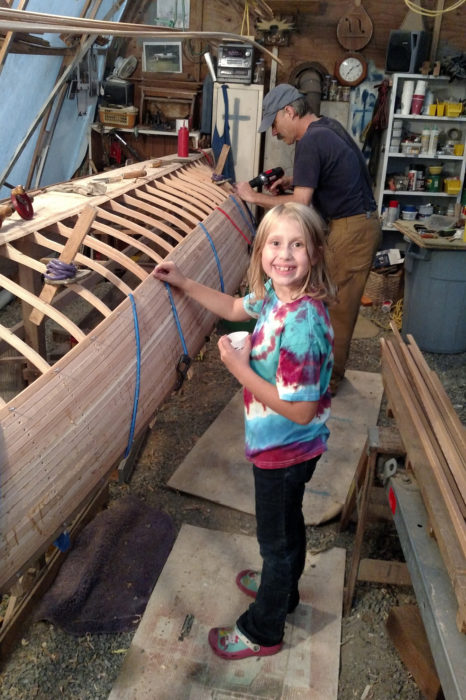
With thousands of screws holding the planks to the frames, Sigrid kept busy placing them in predrilled holes so John could maintain a steady rhythm with the drill/driver.
The guideboat described in the Olivette/Michne book is 16′ long, a bit too long for strips cut from their readily available 16’ stock to wrap around the molds, so John and Gary decided to shorten the guideboat to 14′8″. John was not timid about modifying desigsn, having departed from the plans for a few of the boats he’d built— changing sizes and even converting a transomed design into a double-ender.
They milled western red cedar 1x4s into cove-and-bead strips for the planking and Douglas fir for laminating stock for the frames. Strip-built boats can be built with fiberglass inside and out strengthening the hull, but Gary and John—and Sigrid—invested the time and effort to make the 50 half frames and lap them in 25 pairs on a ¼” plywood plank bottom. “Cutting, bending, laminating, and then cutting individual ribs from the shaped blanks and attaching them to the bottom board,” John noted, “proved to be a laborious process and probably where most of the building time was spent.”
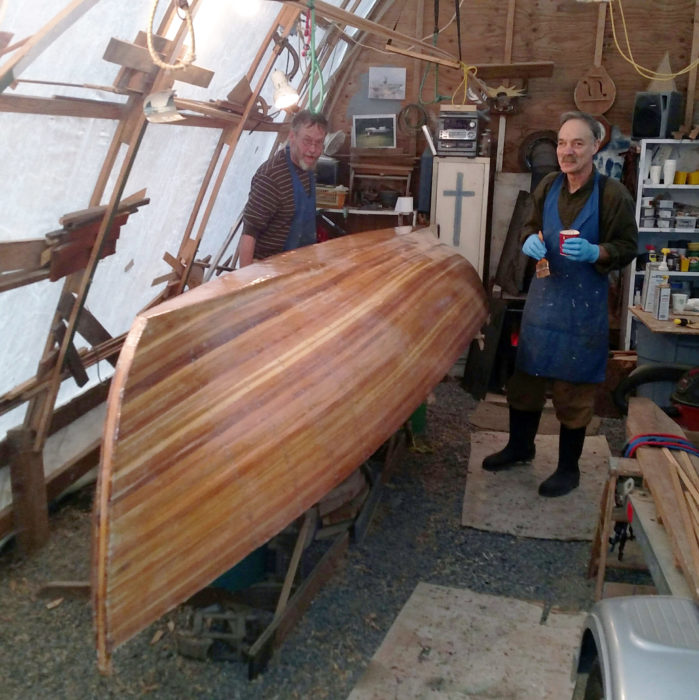
Gary and John step back from their work after saturating a layer of ‘glass with epoxy.
The delicate frames add considerably to the beauty of the boat, and echo the construction of the original guideboats, without taking on the extraordinary challenges of the traditional beveled, smooth-skin planking. In another nod to traditional construction, each strip was screwed to each frame. Sigrid was charged with placing a good portion of the more than 2,000 3/4″ flathead wood screws.
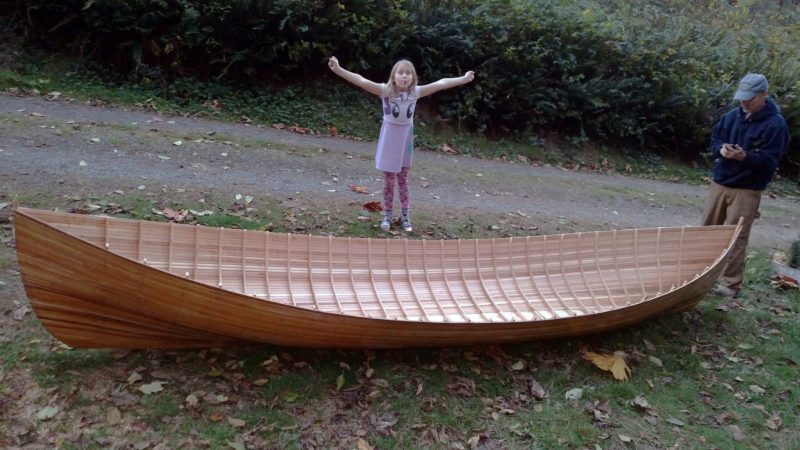
With the planking and sheathing complete, the hull was taken outside to be admired. Sigrid celebrated the occasion with a lollipop.
The hull was sheathed in fiberglass and epoxy, then outfitted with an inwale, which was a departure from tradition but serves as a useful handhold for carrying the boat and as good place for tying docking lines.
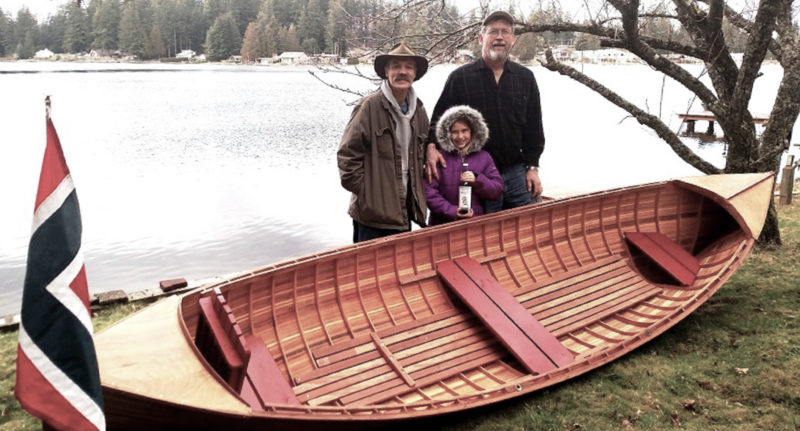
On launch day, the guideboat, sporting a Norwegian flag, was christened ATNA with a bottle of water from Norway’s Atna River.
The finished guideboat was launched on Lake Ki, a stone’s throw from John’s shop, and christened ATNA, after a river that passes the Strombo ancestral farm nestled among the inland mountains of southern Norway. Gary’s wife, Kristina, surprised him by providing a bottle for the christening; it was filled with Atna River water that had been sent by his Norwegian cousin for the event.
In 2017 the guideboat was put to good use doing a little fishing and cruising in the lakes and rivers in the Everett area. Among the plans for the coming summer is a 60-mile cruise down the Clark Fork of the Columbia River and past the farm in Montana where Gary was raised.![]()
Have you recently launched a boat? Please email us. We’d like to hear about it and share your story with other Small Boats Monthly readers.
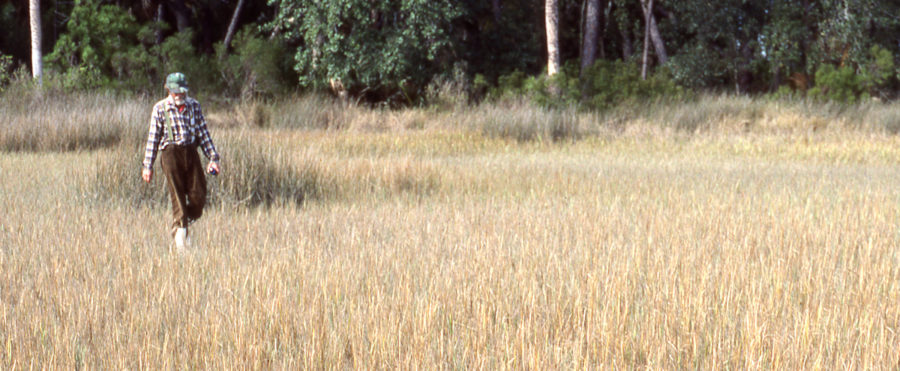
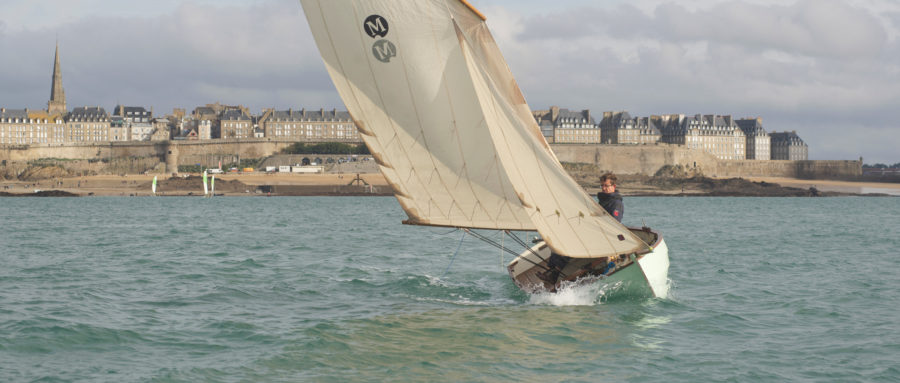
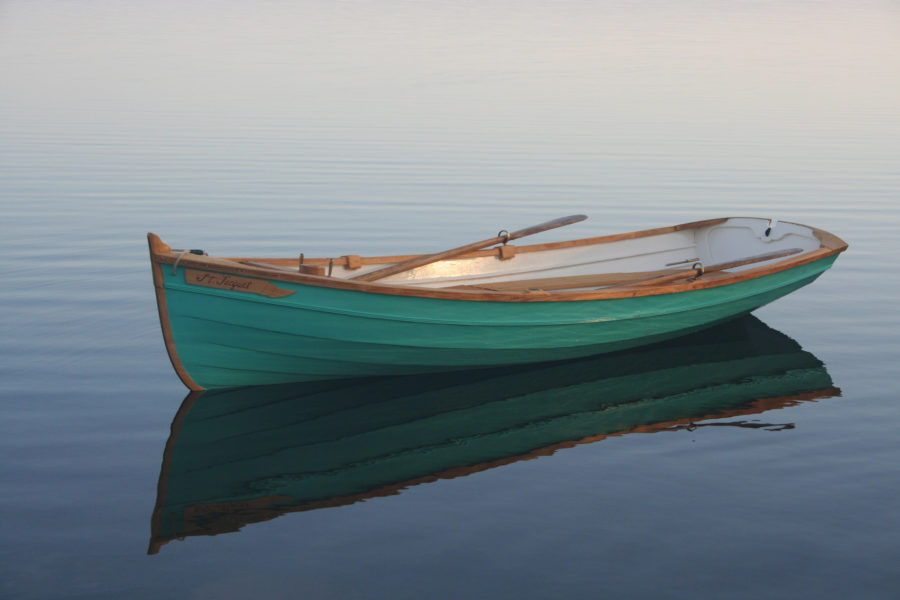
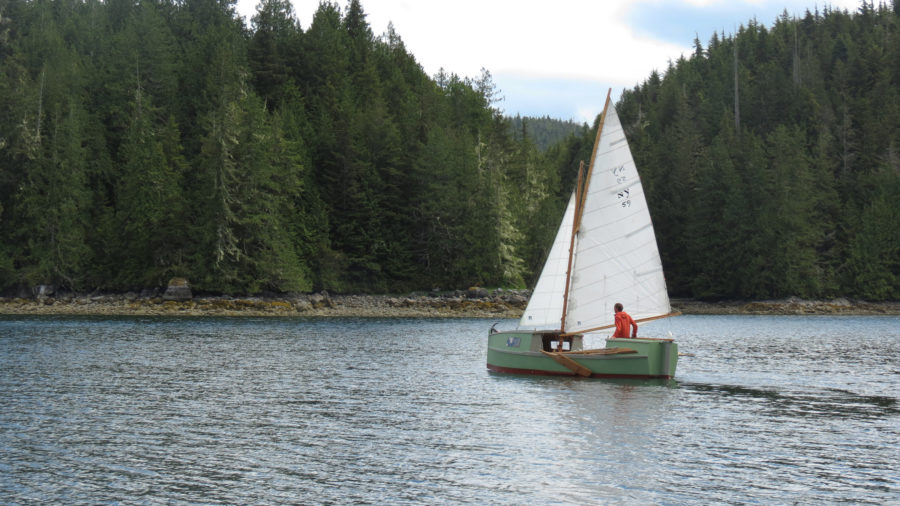
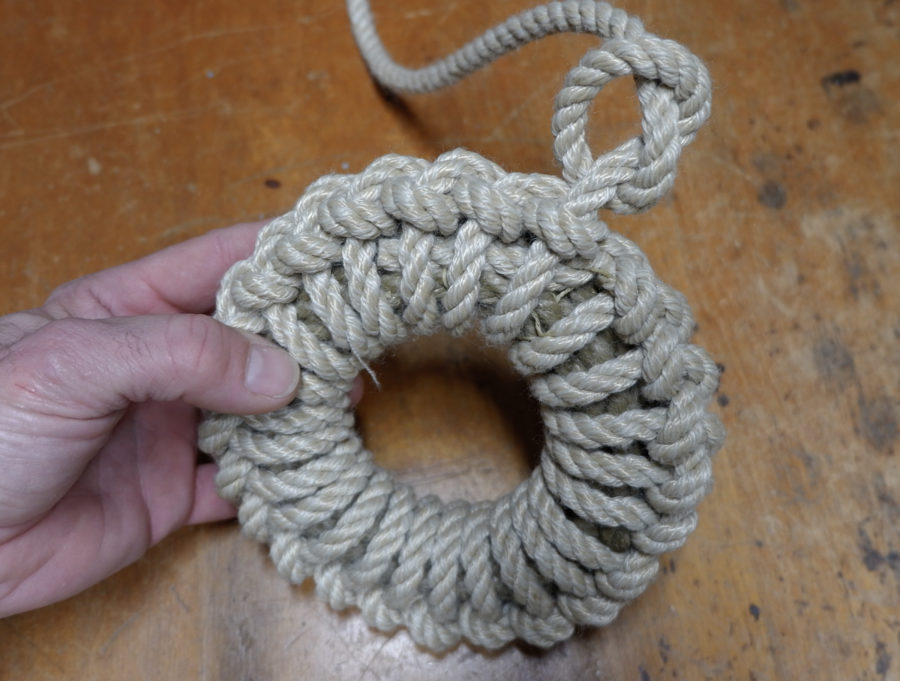
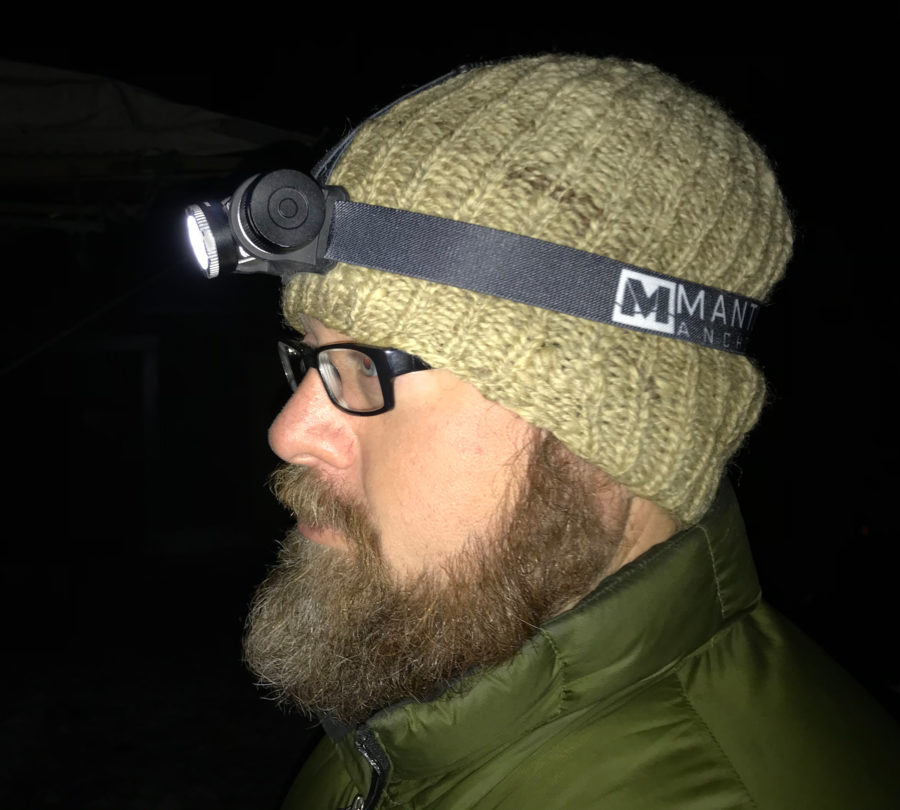
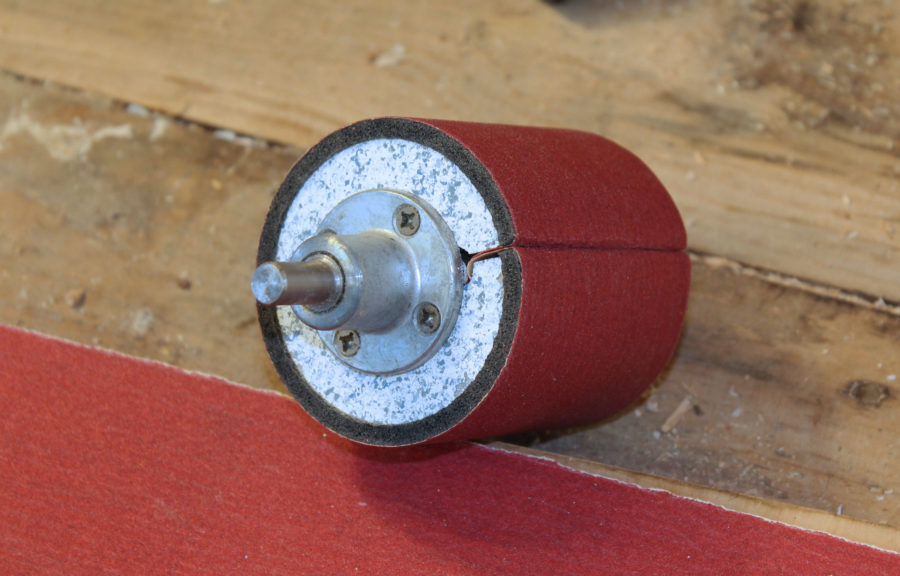
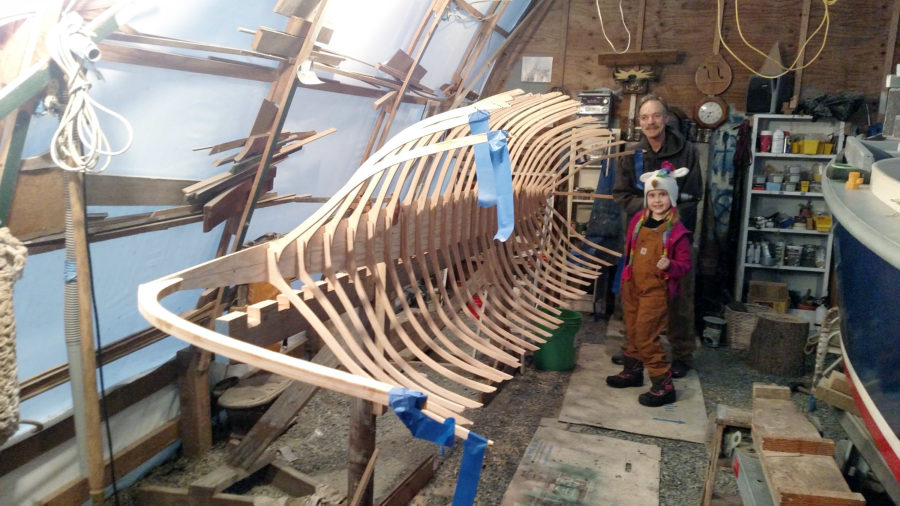
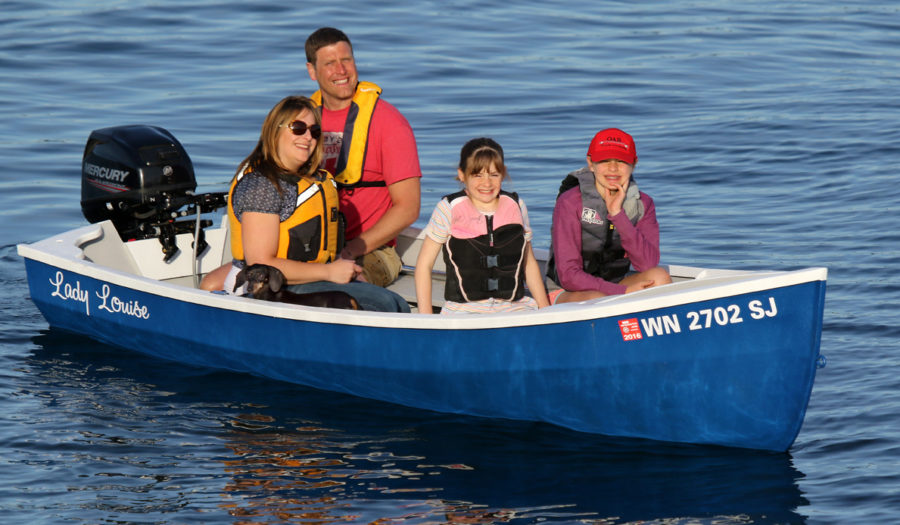
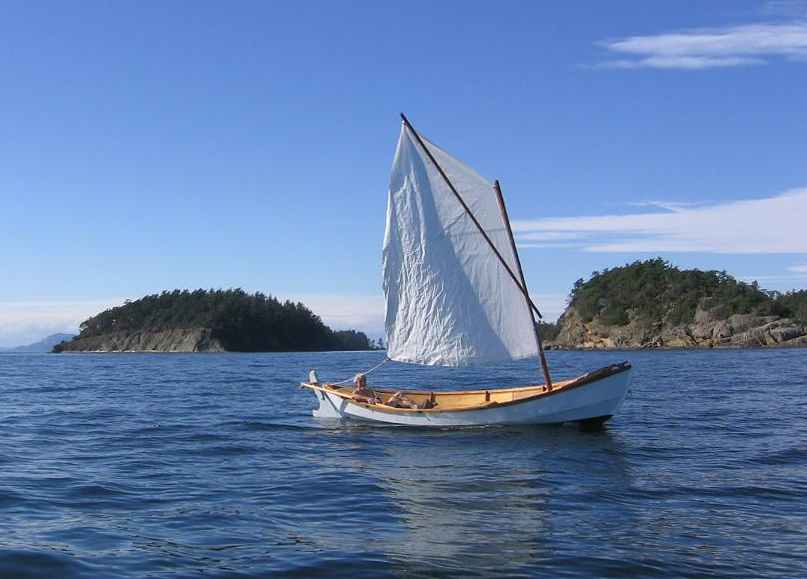
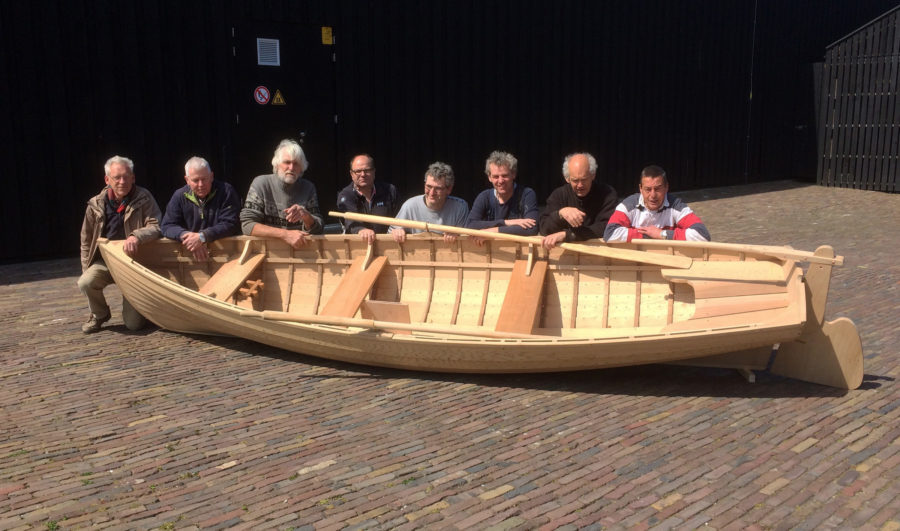
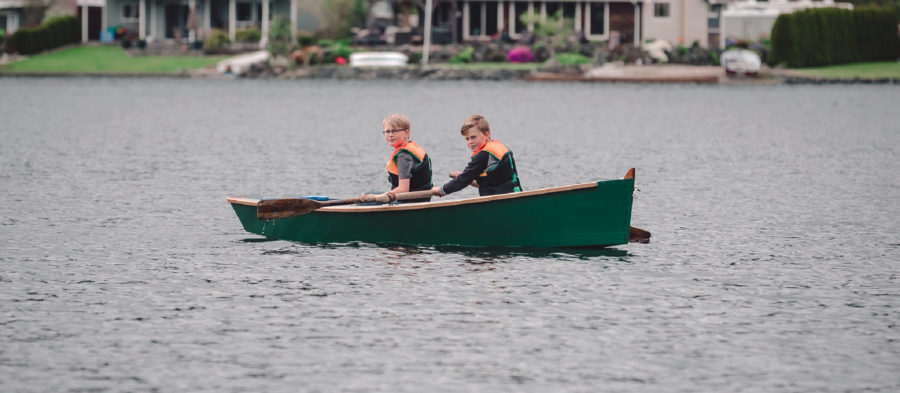
Wow! What a beauty. Thanks so much for sharing her with us.
I admire people who follow their dreams no matter what those dreams are. Building anything from scratch takes time and planning. Congratulations on sticking with it.
What a lovely boat! The cedar planking is magnificent and she’s impressive from the inside, too. But the most touching thing about this build is that you included Sigrid so fully in the build. What a great experience for a child. I can tell she enjoyed it by her enthusiasm in the photos!